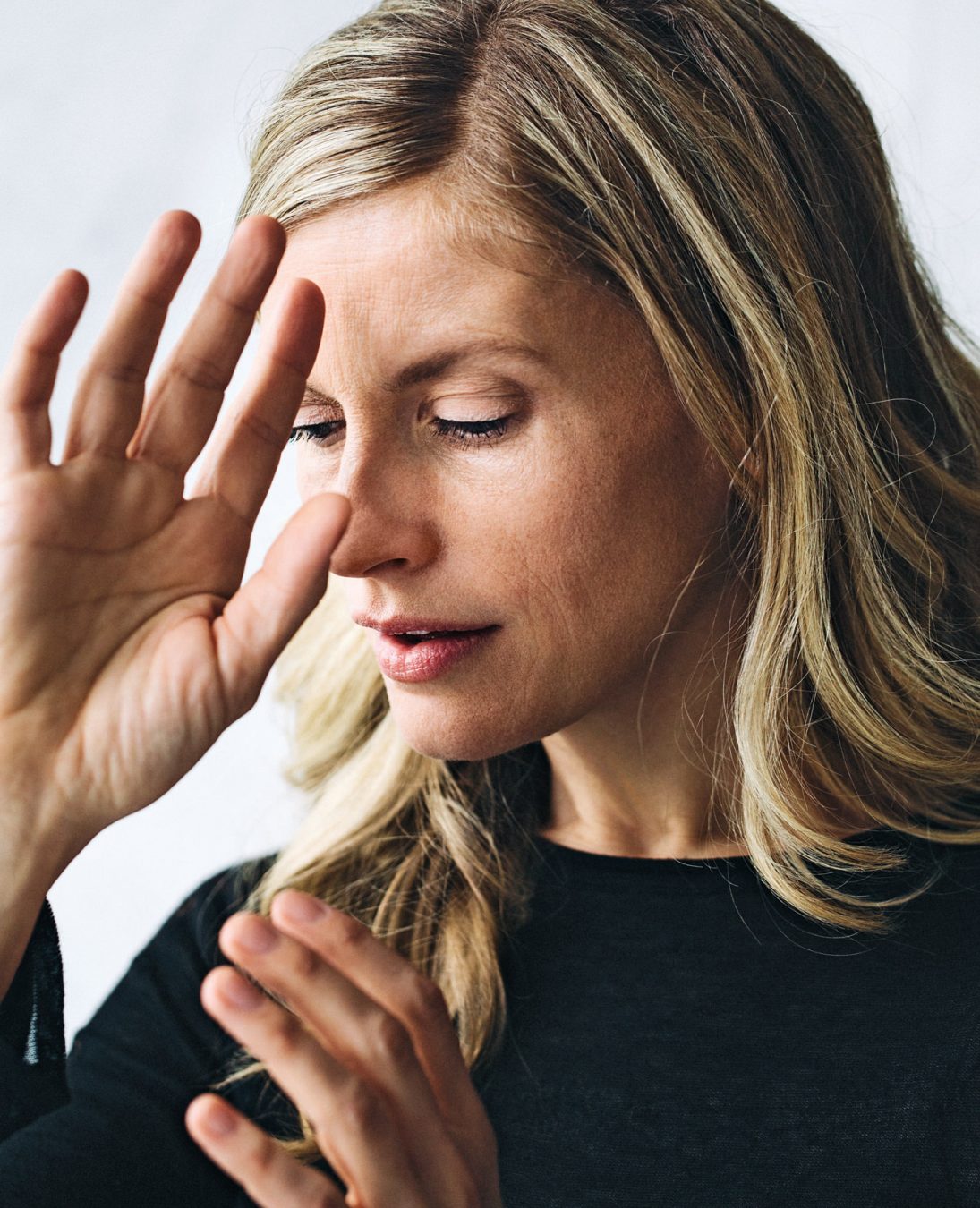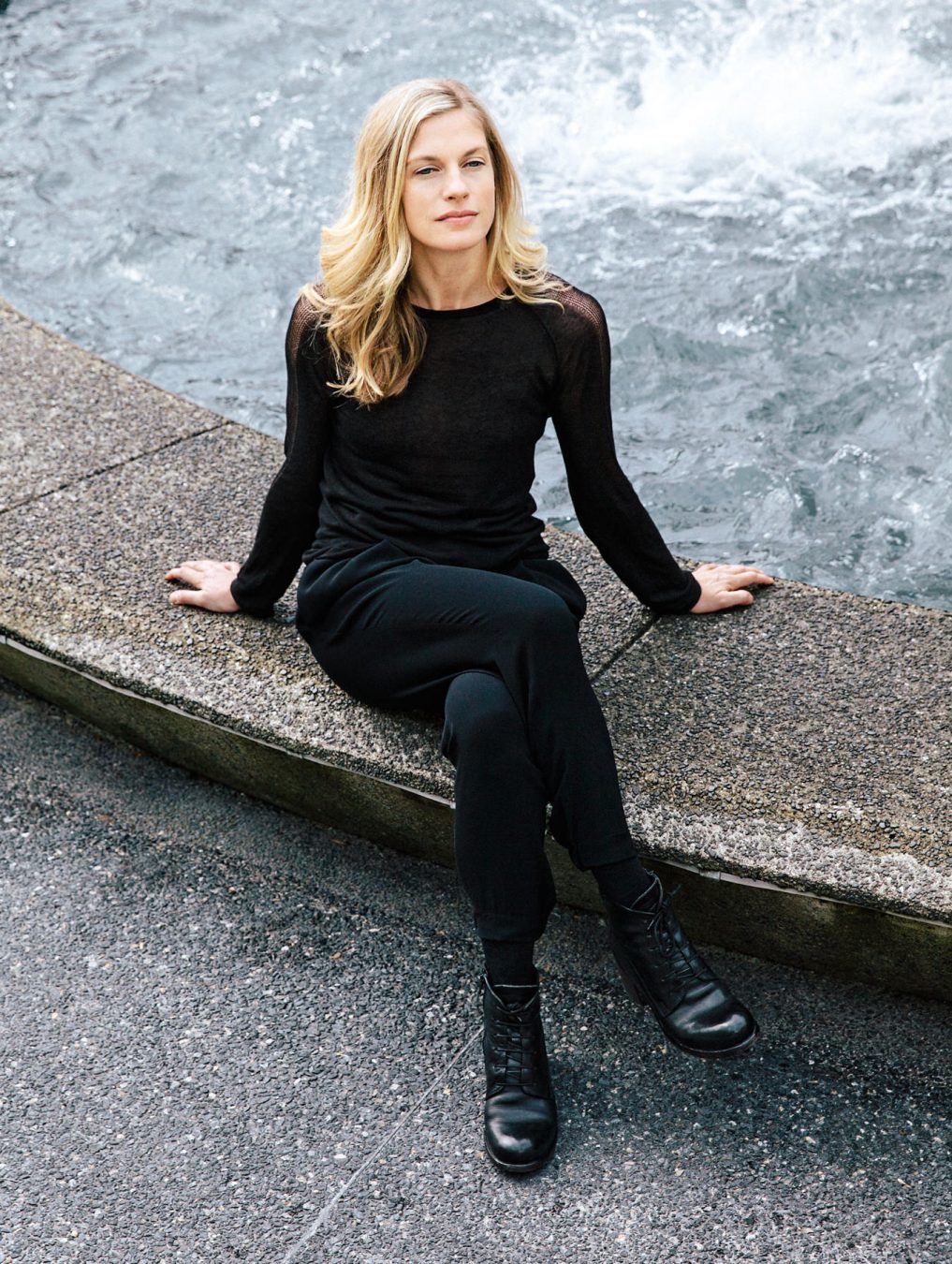Betroffenheit. The German word has no direct English translation, thus representing something that cannot be expressed out loud. It is the title of Crystal Pite’s latest show, an exploration of that which we wholeheartedly feel and yet are unable to articulate. Dance at its very core is utilized to communicate what cannot be uttered in words, and it is in this unspoken language that Pite is most fluent.
Since launching her own company, Kidd Pivot, in 2002, Pite has become one of the contemporary dance industry’s most creative and interesting minds. The Terrace-born, Victoria-raised, Vancouver-based choreographer uses her body to converse with the world, allowing her work to, quite literally, speak for itself. “Ultimately, I want people to connect with what I’m doing. I try to always offer lots of different pathways into the work,” she says. “Contemporary dance can tip easily into the vague or esoteric. I try to push against that.” Pite’s work is intricate and sensitive, both calm and chaotic; she creates space where there is none, forcing the body to continuously surprise itself. “I work with a lot of contrast, not really in order to find balance but in order to find tension between things. In contrasting elements, I think there’s kind of an aliveness that comes with the tension,” she says. “I think it’s one of the key states that I would try to create in an artistic process: working between two opposing ideas. It’s not comfortable; it’s not a comfortable place to work from. But it seems to add a kind of vitality to the process.”
Pite’s professional choreographic introduction came in 1990 for Ballet British Columbia, and she has since created pieces for companies including The National Ballet of Canada, Cedar Lake Contemporary Ballet, Les Ballets Jazz de Montréal, Cullberg Ballet, and Louise Lecavalier/Fou Glorieux. She is the associate choreographer of Netherlands Dans Theater I, associate dance artist of Canada’s National Arts Centre, and associate artist at Sadler’s Wells in London. From 2010 to 2012, Kidd Pivot was a resident company at Künstlerhaus Mousonturm, with the support of Kulturfonds Frankfurt Rhein Main.
“I work with a lot of contrast, not really in order to find balance but in order to find tension between things.”
Perhaps her most famous work to date is Kidd Pivot’s The Tempest Replica, an expansive, stunning, and exploratory take on Shakespeare’s The Tempest. The piece was cited in Pite’s 2015 Olivier Award, a prestigious British arts honour, which she won for Outstanding Achievement in Dance. Unlike so much of contemporary dance, Pite’s creations appeal to, and resonate with, a large audience—and in this lies true artistry. “I think accessibility is something that I really strive to,” she says. “It’s a tricky word in this business. Accessibility can be construed as a kind of dumbing down, but actually I feel the opposite: it’s something that requires mastery. To be able to provide access to what you’re doing to a wide variety of people is a very difficult thing to do.”
Pite trained at a local dance school in Victoria, where her ballet teacher would often give her the keys to the studio and let her choreograph on her own. Upon graduating high school, she joined Ballet BC—an accomplishment in itself for someone who never received training at a professional academy. Then in 1996, she joined Ballett Frankfurt under the direction of renowned modern dance choreographer William Forsythe, where she stayed until forming Kidd Pivot.
Despite this success as a dancer, Pite says she often felt like an imposter. She describes her ballet technique as “good enough”, but says she always felt as if she had to create a smoke screen to cover up what she saw as the truth: that she wasn’t quite up to par. It was within this insecurity, however, that she found her stride. “I think that ability that I had to cultivate, to be able to wing it and fake it, actually served me really well. I’m actually quite proud of the fact that I was able to wing it and fake it for so many years,” Pite says with a hearty laugh. Her presence is warm, her voice soft; she often pauses to think before speaking, making sure the right words come out. The approach is much the same when she is creating movement. “It’s easy to string together a bunch of steps, but to try to make sure that it resonates, that it’s clear, that it’s comprehensible—all those things are much more challenging,” she says. “If I’m working with any kind of story, even fragments of story, [it’s about] making sure I’m providing some kind of clarity for the viewer rather than just red herrings.” She also strives to leave space for the unknown in her work, facilitating an impactful experience for the viewer without exercising too much control over how they interpret it.
“There’s a vulnerability and a fragility that’s come into my life that I’m still getting used to. I don’t feel invincible anymore.”
These challenges are put to work in producing Betroffenheit, which circles back to the exploration of what dance says that words cannot. “We’re talking about trauma, we’re talking about unimaginable grief, and what the path is through that kind of suffering, and how do they keep going, how do they move on?” says Pite. “But at the same time we wanted to ask those questions in a more universal way. So Betroffenheit embodies that sense of suspension, that sense of disbelief, creating an awareness about the limits of language.” If the words are broken, the question becomes: how can dance pick up the pieces?
Betroffenheit is a hybrid dance and theatre show co-produced with Jonathon Young and his Electric Company Theatre. The impetus for the piece came from Young, who has a personal experience with grief and approached Pite to create the partnership. The work will premiere in July at the Canadian Stage/Panamania Arts and Culture Program of the Toronto 2015 PanAm and ParapanAm Games, and then go on tour across North America in early 2016. “I’ll be curious to see the reaction, curious to see who comes, curious to hear how they’re affected or how they connect to what we’re doing,” says Pite. “It feels new for me, it feels like something I haven’t done before. At the same time it feels like a culmination of everything I’ve been working on.” She knew creating the work would “be an enormous challenge” and “take everything” she had—but that is exactly what she wanted.
On stage in Betroffenheit are five Kidd Pivot dancers along with Young. Pite used to dance with her company, but stopped performing a few years ago, around the same time she had her now four-year-old son Niko with partner Jay Gower Taylor. “There’s a vulnerability and a fragility that’s come into my life that I’m still getting used to,” the 44-year-old says. “I don’t feel invincible anymore.” Perhaps surprisingly, Pite was always a nervous performer and thus does not miss the stage. What she says she does miss, however, is “being a dancer among dancers.” There’s a gap between her and her company members, a “distancing that happens automatically when you stop rolling around on the floor with your colleagues.” But now, she says, rather than performing with them, she dances through them. “I am so viscerally connected to what they’re doing,” she explains. “Even though I can’t do it anymore, I know how it feels to do what they do.”
Pite has transitioned from center stage to backstage, but dance is still intrinsically woven into her life’s fabric; she uses her choreography to speak in harmony with her surroundings as well as push against them, communicating as much through the shapes she creates as the space that is left in between. For this, no words are needed.
Hair and makeup by Oz Zandiyeh. Crystal Pite is photographed at the Queen Elizabeth Theatre in Vancouver, B.C.











